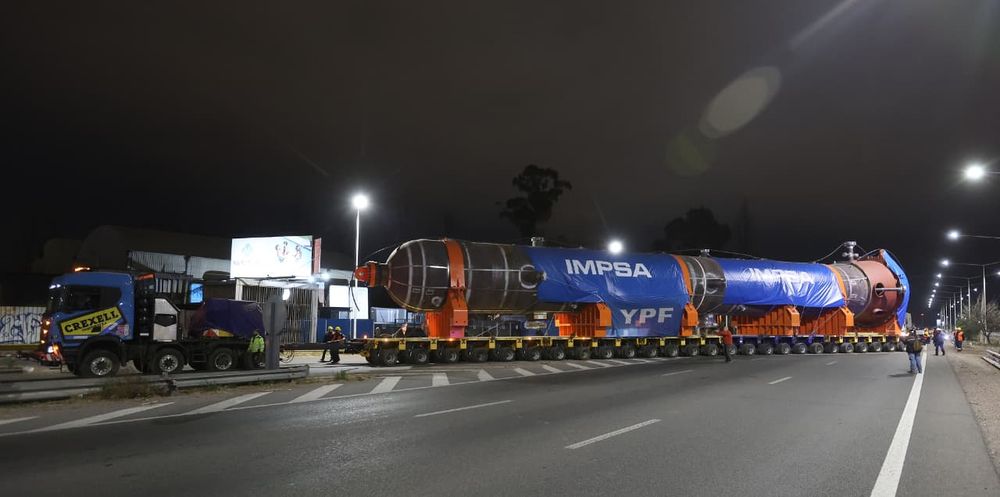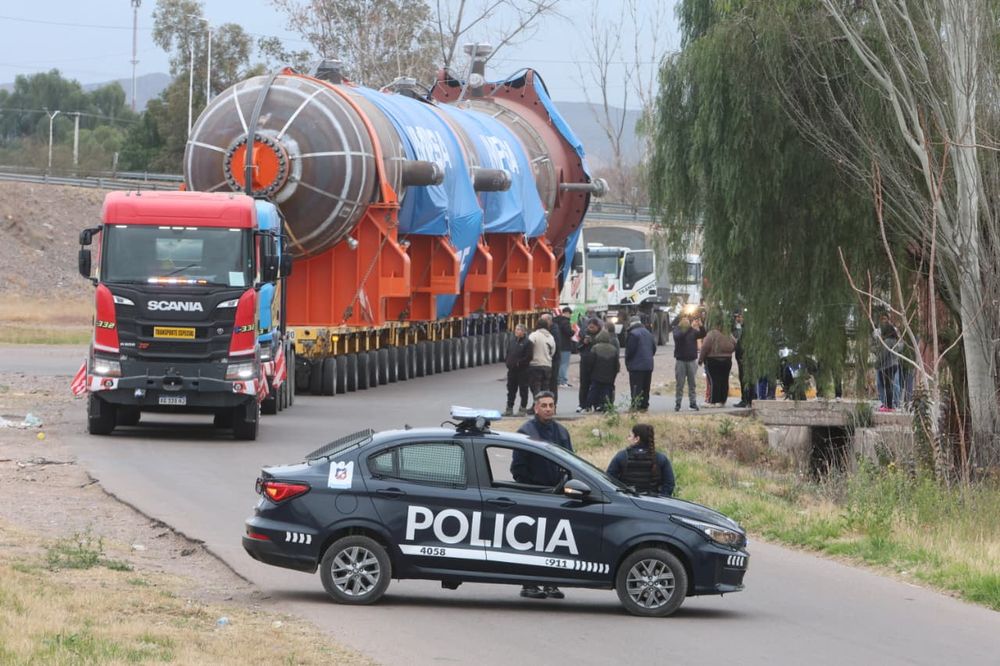Historic transfer: The YPF reactor has been shut down for over 72 hours, awaiting a permit from the Highway Department.

The mega-operation to transport the enormous reactor manufactured by Impsa , the largest and heaviest piece ever moved on the country's roads , has been paralyzed since Saturday and has already accumulated more than 72 hours of waiting.
The reason: the lack of authorization from the National Highway Administration for the 456-ton truck to board National Route 7 and complete its final stretch to the YPF refinery in Luján de Cuyo.
Start of the operation to move the reactor that was built in Impsa for YPF

Walter Caballero / Los Andes
The transfer had begun on Friday, August 15, a holiday for tourism purposes. That day, at 5:30 a.m., the reactor departed from the Impsa workshops on the Rodríguez Peña Lane in Godoy Cruz, heading for the South Access Road. After several hours of maneuvering, it arrived around noon at the Boedo South Layover and South Access Road, the first stop on its route. Early Saturday morning, the operation was reactivated, reaching the Perdriel area, near the Mendoza River, where it was stopped .
The problem arose with a bridge on National Route 7 that passes over Provincial Route 15: doubts arose about whether the structure could support the weight equivalent to 30 trucks . Therefore, authorization was requested from the National Highway Administration that same Friday, although due to it being a non-working day, it could not be approved. The weekend prolonged the wait, and as of Tuesday, there was still no news. The agency indicated that technical evaluations are being conducted.
Impsa has stated that they are eager to resume work as soon as possible.
Meanwhile, the imposing HG-D-3501 reactor remains parked , under the custody of company security personnel, awaiting final authorization to resume its journey.
Historic: Why it is an unprecedented operationThis is an industrial and engineering milestone in the country, and it is currently awaiting the signal from the National Highway Administration to resume its journey and finally reach the YPF refinery in Luján.
Moving the reactor requires an unprecedented technical and logistical deployment : guide vehicles, tractors, semi-trailers, hydraulic cranes, and cranes, as well as specialized personnel responsible for maneuvering the load, lifting cables, and organizing roadblocks and detours.
The road closures lasted between 20 minutes and an hour per section and required the collaborative work of the Mendoza Police and officers from the municipalities of Maipú, Godoy Cruz, and Luján de Cuyo.
The reactor was moved by Impsa for YPF. In the photo, it is on the side of the South Access.

Walter Caballero / Los Andes
The HG-D-3501 is a diesel fuel hydrodesulfurization reactor. It will be installed at the Hydrosulfurization Plant (HDS II), a unit nearing completion at YPF's Luján de Cuyo Industrial Center (CILC).
With this addition, Mendoza will produce diesel with just 10 parts per million (ppm) of sulfur, making it a cleaner, safer, and more compatible fuel for modern engines.
It is part of the “New Fuel Specifications” project.
What the Highway Department says about the operationIn this context, the National Highway Administration issued a statement detailing that the delays are due to the need to conduct technical studies of weight and dimensions to ensure the safe passage of cargo over the bridges on National Route 7.
"On Friday, August 15, the company in charge of transportation presented a technical study that is currently being evaluated by the National Highway Administration, with the commitment to grant approval as quickly and with professional rigor as possible. These precision works are essential to safeguard road structures and users, so the delay is due exclusively to safety issues and not to administrative delays," the department emphasized.
losandes





